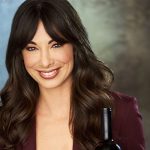Seth Corr is the beverage director of Greens, a vegetarian restaurant in San Francisco, California that focuses on seasonal harvests from local farmers.


You mentioned on the poll that Greens’ wine sales increased over the past year. Did you implement any new programs to help promote sales?
We are trying to reestablish Greens as a wine destination, which it hasn’t been for a while. A lot of that is just boots on the ground, training staff, getting people enthusiastic and excited about wine so that when customers come in, they’re also excited about wine. That was the project last year. This year, we are focusing on events, like chef collaboration wine dinners, to, hopefully, capitalize on the skills that we’ve gained in the last year. We have our first with Robert Sinskey on March 29th.
The Robert Sinskey Carneros Merlot was one of the wines your staff got excited about this year.
Robert Sinskey, being the first Demeter-certified, biodynamic grower, was one of the early organic producers; that’s a story that, the more you tell it, the more you get comfortable with it. We ran his white for a period by-the-glass, we have his dessert wine and we do really, really well with the merlot. The merlot revival is kind of amazing with how much of that wine we sold this past year. You get to critical mass where the servers really know the product and the story, and they get more comfortable, confident and passionate about it. Then it just starts kind of selling on its own.
A merlot revival?
I still remember Sideways and how so many people ripped out their merlot vines and re-planted pinot noir. I still sell more pinot noir than merlot, but that Sinskey was one of my top-selling bottles, especially for that $90 price point. I sell more merlot at that price point than cabernet; it’s comfortable, it’s juicy, it’s got nice structure—there’s value there. It’s not possible to get that in California cabernet at the same price point.
Any other wine trends you noticed?
The message of this year was: a lot of stuff that sold, I don’t really know why it sold. The Clos Saron Carte Blanche is a wine I thought I was going to buy because I geeked out on the whole Renaissance winery, the Fellowship of Friends up in Oregon House, which I think is an incredible California wine story. You tell the story and somehow it resonates and the wine moves. We sold about 26 bottles; that’s a lot for a $95 bottle of a weird variety from Sierra Foothills. It’s not chardonnay. It’s not Napa. It’s not a famous name.
Customers were also clamoring for the Loire Valley. I have no idea why that was or what that was, but it seemed to do really well. They were specifically asking for sauvignon blanc and cabernet franc, which meant the list started to skew more and more towards the Loire Valley. And then the wines just sold like crazy.
There’s a lot of mysterious things that happen. Last year I talked about how much Champagne we sold. I didn’t sell any Champagne this year. I bought a bunch of Champagne thinking that I was going to sell it and instead I sold a bunch of cabernet franc. I have so much Burgundy and Champagne downstairs that I thought I was going to sell over the holidays that I didn’t sell and am now sitting on. Instead, I wound up selling a lot of weird California cult wine, Saumur-Champigny, chenin blanc and cool things from places that I didn’t think I’d sell. I don’t know why it went the way that it did, but I’m not mad, because we got into some cool nooks and crannies of the wine list that I wasn’t necessarily expecting.
What’s the average price point people are spending for wine?
I sold a lot more wine by-the-glass last year. When I looked in the price matrix, we sold a lot of those in that $19- to $22-a-glass range. For bottles, I always thought that the sweet spot where you’re going to get the most turnover is in the $50 to $80/bottle range, and that was kind of a dud. But we sold a ton of stuff, especially around the holidays, for around $150, and it was random: natural Chablis, Radio-Coteau chardonnay or Domaine Tempier Bandol and Vieux Télégraphe. These are famous producers in some ways but still, not a lot of rhyme or reason. I was happy to see the sales sheet but often times thought, that’s funny—that’s not how I thought it was going to go at all. It was a confusing year but a good year.
Any theories on this phenomenon?
There is a diversity of input nowadays. There was an article about Beauregard or something and people have this idea that cabernet franc has to be from Saumur-Champigny. I could put Chinon and Saumur-Champigny on the list and I will sell way more Saumur. I have that Petit St. Vincent by-the-glass and it’s been one of my highest-selling wines. There’ll be an article about Clos Saron every once in a while, and people will read it and remember it. They see it on Instagram and then they buy it. I think as Millennials are coming to more of a wine-drinking age—in their mid- to late-30s—they have disposable income and are buying more wine. They aren’t necessarily reading Wine Spectator; they follow a couple somms on Instagram.
Did you encounter any supply issues this past year?
The market careens back and forth. Last year, nobody had any Champagne, so everyone went heavy on Champagne and then the market flooded. Then, nobody’s drinking it and Champagne’s out. The same thing happened with rosé the year before, which was that in the supply chain nobody had fresh rosé. So, the next year you order a ton of rosé. Now, this year, I’m getting tons of emails from suppliers trying to close out their rosé—originally it was $15 but they can give it to you for $11.50—last year at this time, I couldn’t find any rosé to save my life. There are these ripple effects that are continuing to affect the market.
Any final thoughts?
(Laughs) Sales were good, people were drinking for sure, and it was all very confusing.
Based in Los Angeles, California, Alissa Bica is the Associate Editor and Spirits Critic at Wine & Spirits. She is also a sommelier at 71 Above and co-runs the home wine tasting company, Côte Brune and Blonde. In any rare moments of free time, she writes about obscure grape varieties in the blog Off the Beaten Wine Path.
This is a W&S web exclusive. Get access to all of our feature stories by signing up today.




















